Welcome to our blog, where we will embark on an exciting journey to explore the fascinating world of Eels. Eels are unique creatures of the animal kingdom, precisely the order Anguilliformes. They have a rich history, intriguing facts, a wide range of sizes and habitats, and a diverse classification, making them genuinely captivating.
To begin, let’s delve into the history of these incredible animals. Eels have been part of human culture for centuries, appearing in ancient mythology and folktales worldwide. They have even been mentioned in famous literature, like Shakespeare’s plays. Their long, slender bodies and mysterious nature have intrigued humans for generations.
Next, let’s explore some interesting facts about eels. Did you know that there are around 800 different species of eels? These incredible creatures can be found in fresh and saltwater environments; some can even survive for short periods outside of water. Amazingly, eels can grow to various sizes, ranging from a few centimetres to several meters long!
Moving on, we will look closer at eels’ diverse habitats. They can be found in oceans, rivers, lakes, and underground caves. Some eels are known to migrate long distances, while others prefer to stay in their habitats throughout their lives. Their ability to adapt to different environments is genuinely remarkable.
Our blog will explore the captivating world of eels, uncovering their intriguing history, fascinating facts, varying sizes, habitats, and diverse classification. So join us on this adventure to expand our knowledge and appreciation for these extraordinary creatures. Let’s dive in and explore the wonderful world of eels together!
History of Eel
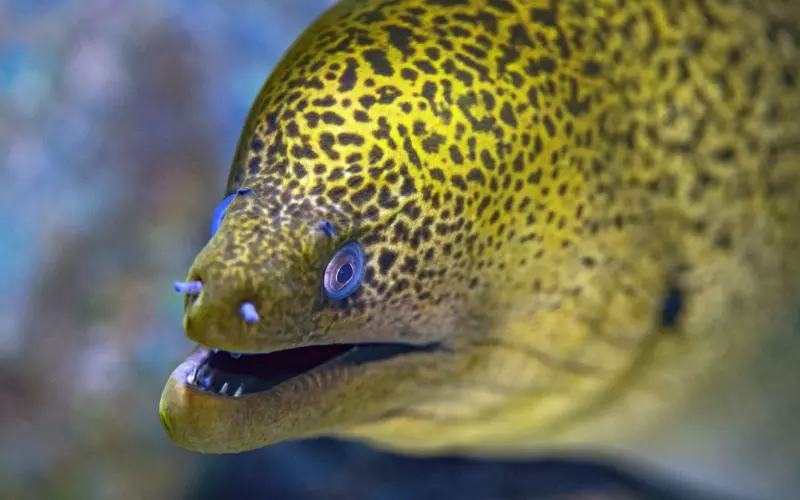
The eel is a fascinating creature with a long and mysterious history. It belongs to a group of fish known as Anguilliformes, and there are approximately 800 different species of eels globally. These slimy creatures are known for their serpent-like bodies and slick skin, which allows them to swim gracefully through water.
Eels have been around for millions of years, and their origins can be traced back to the Mesozoic era. They can be found in various habitats, including freshwater rivers, lakes, and even the deep ocean. Eels are known for their ability to adapt to different environments, and they have been able to survive through many changes in the Earth’s climate.
Eels have played a significant role in various cultures and cuisines throughout history. In ancient times, the Egyptians worshipped eels as symbols of fertility and rebirth. They believed that the eels’ ability to live in water and land represented the cycle of life and death. In Asian cultures, particularly in Japan, eels have been a popular food source for centuries. Eel dishes, such as Unagi, are considered delicacies and are enjoyed by many.
Today, eels face numerous challenges, including habitat destruction and overfishing. Some eel species are now endangered, highlighting the need for conservation efforts. Scientists continue to study these enigmatic creatures to learn more about their biology and understand how to protect their populations. As we continue to explore and understand the history of eels, it is vital to recognize the importance of preserving their habitats and ensuring their survival in our ever-changing world.
Importance of Eel
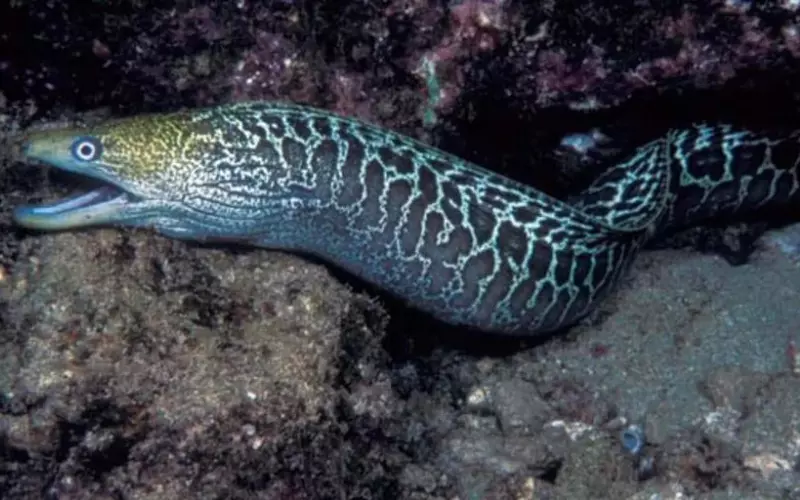
The eel animal is a creature that lives in water, which is essential for many reasons. Firstly, eels play a vital role in the food chain. They are a food source for larger animals like birds and bigger fish. This helps maintain the balance in aquatic ecosystems. If there were no eels, the population of these animals would be affected, and it could disrupt the overall health of the environment.
Secondly, eels are essential for humans, too. They have been a part of our diet for thousands of years. In many cultures, eels are considered a delicacy and are caught for consumption. They are a good source of protein and nutrients essential for our growth and well-being. Eels have also been used in traditional medicine for their supposed healing properties.
Lastly, eels are an exciting species to study. Scientists have been fascinated by their ability to migrate long distances. Some eel species travel thousands of kilometres to spawn in specific locations. By studying eels, scientists can learn more about the behaviour and adaptations of these animals and gain valuable insights into the world of aquatic creatures.
The eel animal is vital for maintaining the balance of aquatic ecosystems, providing food and nutrition for humans, and offering valuable insights for scientific research.
Amazing Facts About Eel
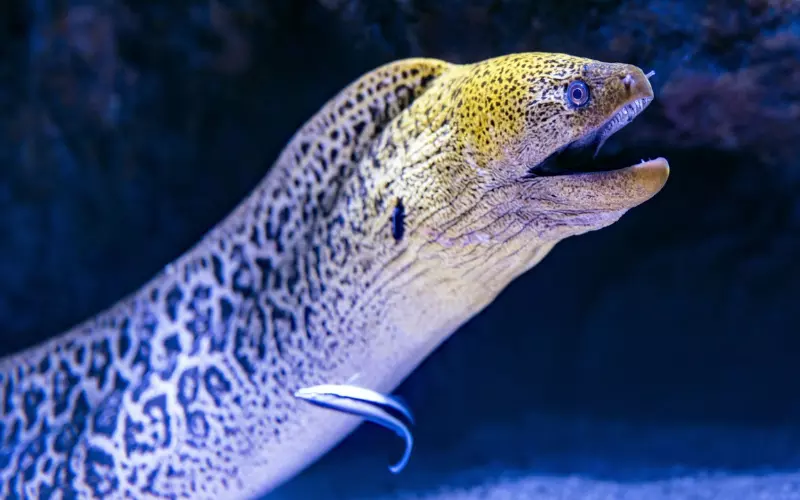
1. Eels are long and snake-like fish living in saltwater and freshwater environments.
2. There are around 800 different species of eels found worldwide.
3. Most eels have smooth and slimy bodies that can vary in color, from green or brown to yellow or silver.
4. The largest species of eel is the giant moray eel, which can grow up to 10 feet in length.
5. Eels have a long dorsal fin that runs along their backs, which helps them swim smoothly through the water.
6. Eels have a keen sense of smell and use it to locate prey such as fish, crustaceans, and molluscs.
7. Despite their slippery appearance, eels have very sharp teeth that they use to catch and swallow their food whole.
8. Eels are known for their ability to travel long distances. Some species of eels undertake incredible migrations from freshwater rivers to the ocean to spawn.
9. During their migration, eels can navigate through various obstacles, including dams and waterfalls, by using their bodies’ flexibility and sliminess.
10. Eels have a slimy layer of mucus on their skin, which not only helps them glide through the water but also protects them from parasites and infections.
11. Most eels are nocturnal, meaning they are more active during the night and rest during the day.
12. Eels are solitary animals and prefer to live alone, although some species can be found in small groups or colonies.
13. Eels have a unique life cycle where they are born in the ocean, then travel to freshwater to mature, and eventually return to the ocean to reproduce.
14. Some species of eels can produce electric shocks, using organs called electric organs located in their tails.
15. Eels have been considered a delicacy in many cuisines worldwide, and their meat is often smoked, grilled, fried, and eaten in various dishes.
Can we keep Eel as our Pet?
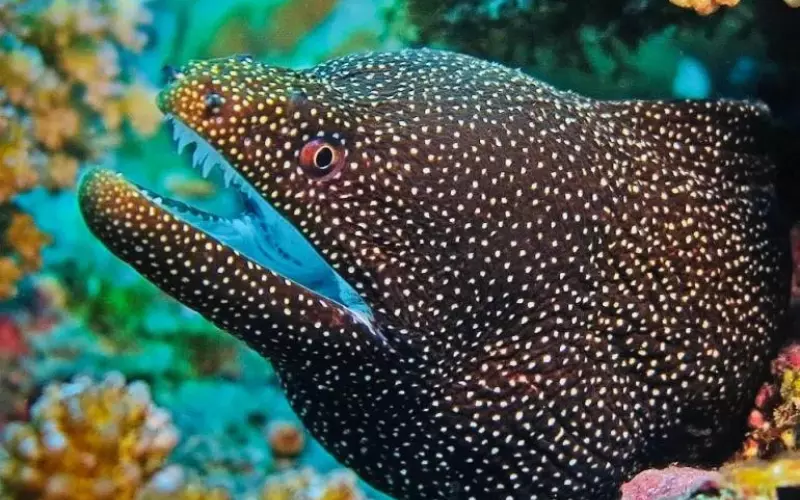
Eel animals can be found in various places, such as rivers, oceans, and even some freshwater lakes. These fascinating creatures have a long, snake-like body and a smooth, slimy skin. While some people may be curious about keeping eels as pets, it is essential to consider whether they are suitable companions for our homes.
Firstly, eels require a special kind of habitat that can be challenging to replicate in a typical household environment. They need a large tank with plenty of water and hiding spots, such as rocks or plants, to mimic their natural habitat. Moreover, they require a specific water temperature and quality, which can be quite difficult to maintain.
Furthermore, eels have specific dietary needs. They mainly feed on small fish, shrimp, and sometimes even worms. It can be pretty complicated and expensive to provide them with the appropriate diet, especially since eels can be picky eaters. Additionally, eels can become aggressive if they are not fed properly or if they feel threatened, which can pose a risk to other pets or even humans.
While eels may seem intriguing, they are not suitable pets for the average person. They have specific housing and dietary needs that can be challenging to meet while potentially being risky to keep in a household setting. It is essential to prioritize the well-being of animals and ensure they are provided with an environment that closely resembles their natural habitat. Therefore, it is best to leave eels in their natural homes and admire their beauty from a safe distance.
Size of Eel
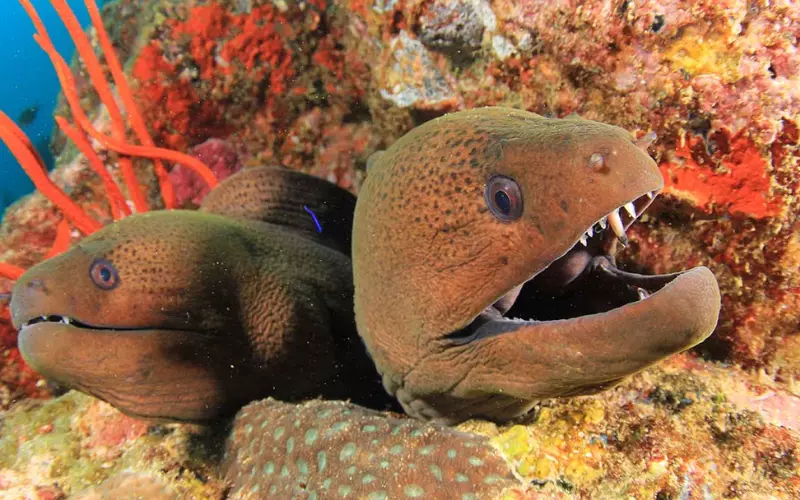
Eels are fascinating creatures that come in different sizes depending on the species. One of the smallest types of eel is the dwarf eel, which measures only a few centimeters long. These tiny eels are usually found in the depths of the ocean and are barely visible to the naked eye. On the other end of the spectrum, we have the giant moray eel, which can reach an astonishing length of up to 13 feet! These massive eels are known for their intimidating appearance and are often found hiding in coral reefs.
Most eels, however, fall somewhere in between these extreme sizes. The average size of an eel can range from around 12 inches to 4 feet long. One such example is the European eel, which typically grows about 2 to 3 feet long. These eels are commonly found in freshwater rivers and lakes across Europe. They have a long, snake-like body that helps them move through the water with ease.
Eels come in various sizes, from tiny dwarf eels to huge giant moray eels. While some eels are barely visible, others can grow to impressive lengths. The size of an eel often depends on its species and habitat. So whether you encounter a small dwarf eel or a massive giant moray eel, these creatures are sure to captivate us with their diverse sizes and unique characteristics.
Habitat of Eel

Eels are unique and fascinating creatures that live in different habitats around the world. They can be found in rivers, lakes, and even the open ocean. Eels prefer to live in freshwater environments, although some species can tolerate saltwater too.
One typical habitat for eels is rivers. Rivers provide a constant flow of fresh water, essential for eels’ survival. Eels can often be found hiding among rocks and vegetation along the riverbanks. They use their slimy bodies to slither through the water and find shelter in these areas. Rivers also offer a steady supply of food for eels, such as smaller fish and insects.
Lakes are another suitable habitat for eels. These freshwater bodies provide calm and still waters, allowing eels to swim freely and search for food. Lakes often have a variety of vegetation, which eels use to hide and rest. Eels are nocturnal creatures, meaning they are more active during the night. In lakes, they can hunt for prey without disturbances from other predators.
Some eel species, such as the European eel, spend part of their lives in the open ocean. These eels undertake long migrations, traveling thousands of kilometers to reach their breeding grounds. The ocean provides a vast and diverse habitat for eels, with plenty of food sources and deep waters to explore.
Eels inhabit various habitats, including rivers, lakes, and the open ocean. They rely on freshwater to survive and often seek shelter among rocks, vegetation, and other hiding spots. Understanding the eel’s habitat is essential for studying and preserving these mysterious creatures.
Classification of Eel
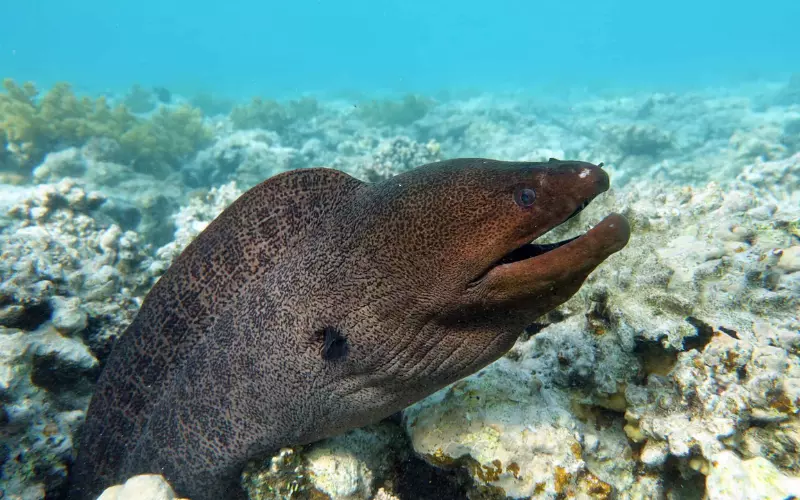
The eel is a fascinating animal that belongs to a group called fish. Fish are cold-blooded creatures that live in water. Eels are specifically a type of fish known as a “teleost” fish. They have long, snake-like bodies and can be found in both saltwater and freshwater environments around the world.
There are various types of eels, but they are usually classified into two main categories: true eels and moray eels. True eels are found in rivers and oceans, while moray eels are mainly found in tropical and subtropical waters. Despite their differences, both types of eels share some common characteristics.
Eels have a unique lifecycle that involves transformation. When they are born, they start as tiny, transparent larvae called “leptocephali.” These larvae drift in the ocean currents for months or even years before transforming into eel-shaped creatures. Their bodies become elongated and slimy as they grow, enabling them to move swiftly through the water.
Eels are a type of fish known as teleost fish. They come in different varieties, such as true eels and moray eels. Eels have a fascinating lifecycle, starting as tiny larvae and undergoing a transformation into their well-known snake-like shape. Whether you spot an eel in a river or an ocean, its distinct appearance and behavior make them an intriguing animal to learn about.
Different Types of Eel
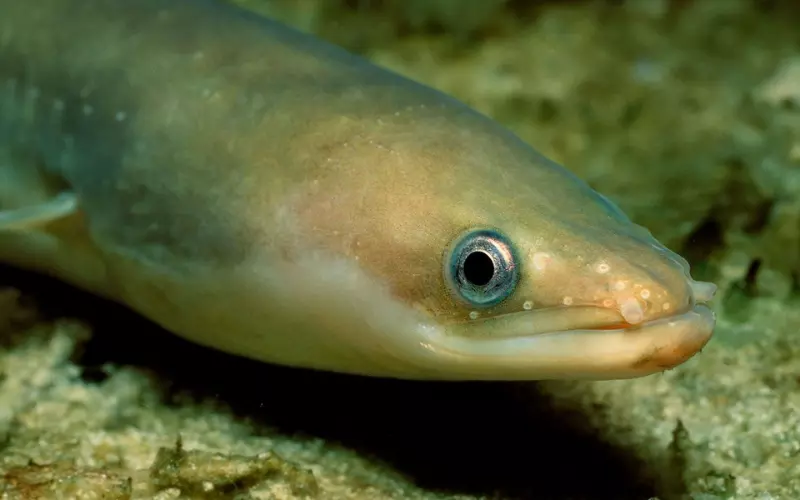
1. Japanese eel: The Japanese eel, also known as Anguilla japonica, is a popular type of eel found in coastal waters of Japan. It is known for its slender body, distinctive yellow coloration, and its delicious taste which makes it a sought-after ingredient in Japanese cuisine.
2. European eel: The European eel, scientifically known as Anguilla anguilla, is a common eel species found in freshwater rivers and coastal regions of Europe. It has a long, snake-like body and a dark brown colouration. It is highly valued for its flavour and is often used in traditional European dishes.
3. American eel: The American eel, scientifically named Anguilla rostrata, is a type of eel native to the eastern coast of North America. It has a slimy body with a dark olive-brown colour and a yellowish underbelly. This eel plays an essential ecological role in freshwater ecosystems and is occasionally used for human consumption.
4. Moray eels: Moray eels are a diverse group belonging to the family Muraenidae. They can be found in various tropical and subtropical oceans around the world. These eels have elongated bodies, sharp teeth, and a biting solid ability. Moray eels are often showcased in aquariums due to their unique appearance.
5. Garden eels are small eels belonging to the family Heterocongridae. They are usually found in sandy or muddy areas of shallow tropical and subtropical waters. These eels have a unique behaviour of anchoring their tails into the seabed, giving the appearance of a “garden.” They feed on tiny floating particles using their jaws.
6. Conger eel: Conger eels are large species of eel belonging to the family Congridae. They inhabit the temperate and tropical waters of the Atlantic Ocean. These eels have a stout body and a mottled brown or grey colouration. Conger eels are often commercially fished for their meat, a delicacy in some cuisines.
7. Snake eel: Snake eels are a group of eel species found in various parts of the world, particularly in tropical coral reefs. They have a thin, elongated body with a snout-like projection at the front. Snake eels are burrowers living in sandy or muddy substrates and are known for their ability to bury themselves rapidly when threatened.
8. Electric eel: Electric eels, scientifically known as Electrophorus electricus, are fascinating creatures found in the freshwater rivers of South America. Despite their name, they are not true eels but belong to the knifefish family. Electric eels have specialized organs that produce powerful electric shocks for navigation, prey detection, and self-defence.
9. Spotted garden eel: Spotted garden eels, also known as Heteroconger hassi, are small eels found in the Indian Ocean and western Pacific Ocean. They have a slender body with distinct spots and can be found in shallow sandy areas, often in groups. These eels are known for their shy nature and ability to retract into their burrows rapidly.
10. Snowflake eel: Snowflake eels, scientifically referred to as Echidna nebulosa, are a popular species of eel found in the Indo-Pacific region. They have a white or cream-coloured body with brown or dark spots, resembling a snowflake pattern. Snowflake eels are often kept in saltwater aquariums due to their unique appearance and calm temperament.
Geographical Presence of Eel

The eel animal is found in various regions around the world. One of the regions where eels are commonly found is in Europe, especially in the rivers and lakes. They are also found in North America, specifically in the Great Lakes and along the eastern coast. In addition, eels can be found in Asia, including countries like Japan, China, and India. These slimy creatures live in freshwater bodies, such as rivers, lakes, and even swamps.
However, there are some regions where eels are not found. One such region is the Arctic, particularly the icy waters near the North and South Poles. Eels are not adapted to survive in extremely cold temperatures, so they are not found in these frosty regions. Similarly, eels are not typically found in deserts, as these arid environments lack the necessary water sources to thrive.
Eels can be found in regions like Europe, North America, and Asia, with freshwater bodies like rivers and lakes. They are not found in icy areas like the Arctic or in desert regions due to the unsuitable conditions. Eels have unique adaptations that enable them to survive and thrive in their specific habitats.
Diet of Eel
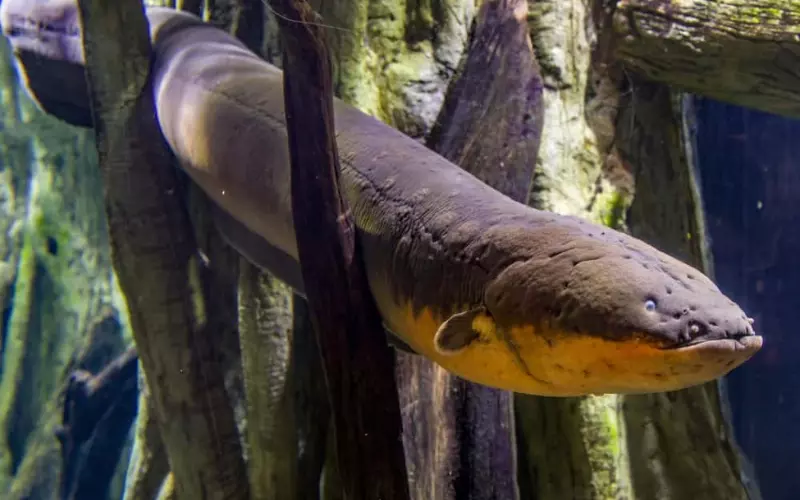
The diet of eel animals consists of many different types of food. They are carnivorous creatures, which means they eat other animals to survive. Eels have a diverse menu that includes small fishes, crustaceans, insects, worms, and even small birds or mammals if they can catch them.
Eels use their sharp teeth to catch and hold onto their prey. They have a strong jaw that allows them to eat animals that are larger than themselves. Eels are also very flexible, which helps them to swim through narrow spaces and capture their food.
They mainly hunt at night, using their great sense of smell to detect prey. Eels also have a keen sense of taste, which helps them find their food in dark and muddy waters. They are patient hunters and can remain hidden for long periods, waiting for the perfect moment to strike.
The diet of eel animals is made up of various creatures. They are carnivorous and feed on small fishes, insects, worms, crustaceans, and sometimes even small mammals or birds. Eels are skilled hunters that use their sharp teeth and flexibility to catch their prey, often hunting at night when their senses are most useful.
Locomotion of Eel
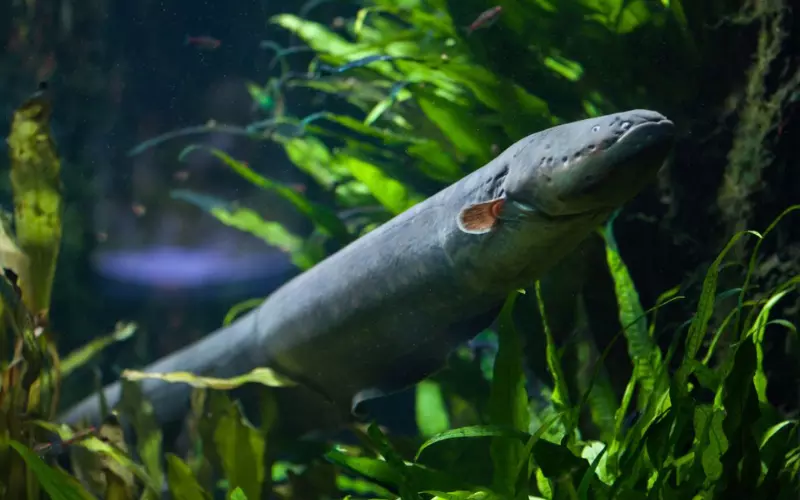
Eels are aquatic animals that uniquely move through the water. Their long, slender bodies allow them to wiggle and slither to swim around. Unlike other fish, eels do not have pectoral fins on their sides to help them move. Instead, they rely on their muscular bodies and a particular type of movement called anguilliform locomotion.
Anguilliform locomotion is when an animal moves by making S-shaped waves from its head to its tail. Eels create these waves by flexing their bodies in a back and forth motion. They contract the muscles on one side of their body while extending the muscles on the other. This action propels them forward through the water. This unique way of swimming allows eels to be agile and maneuverable, even in narrow spaces like underwater crevices.
Eels use anguilliform locomotion, which involves flexing and extending their bodies in an S-shaped motion to swim through the water. This method allows them to move swiftly and efficiently navigate their aquatic habitats.
Social and Sexual Behaviour of Eel
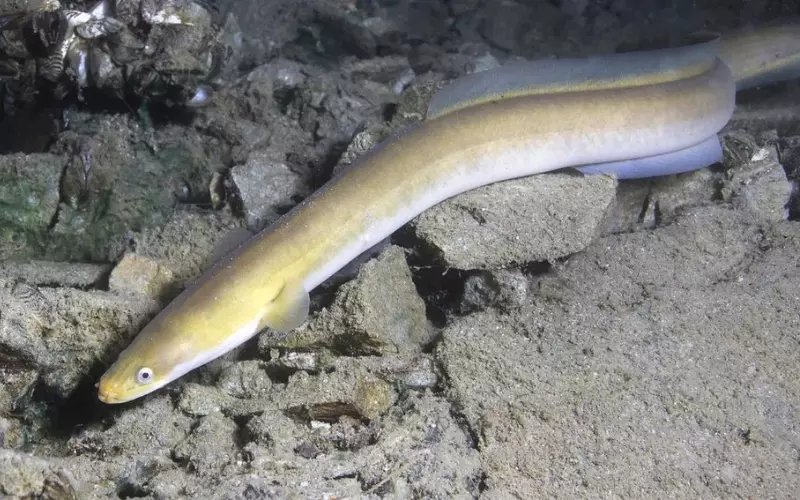
Eels are mysterious creatures with fascinating social and sexual behaviours. In their watery homes, eels often live in groups called colonies. These colonies are made up of eels of different ages and sizes. They like to stick together and swim in a line, almost like a train, when they move around. This helps them to protect themselves from predators and find their way in dark water.
When it comes to mating, eels have a unique way of reproduction. They don’t lay eggs like many other animals. Instead, female eels release thousands of tiny eggs into the water. Then, male eels release their sperm to fertilize the eggs externally. Once the eggs are fertilized, they float in the water until they hatch into tiny larvae. These larvae drift along ocean currents for months before transforming into young eels that can swim back to freshwater bodies.
Interestingly, eels are also known to change their sexual orientation as they grow older. Some eels start as males and later change into females, a process called protandrous hermaphroditism. This allows them to maximize their chance of reproducing. Overall, eels have fascinating social structures and interesting ways of reproduction, making them a unique and intriguing species in the animal kingdom.
Reproduction and Lifecycle of Eel
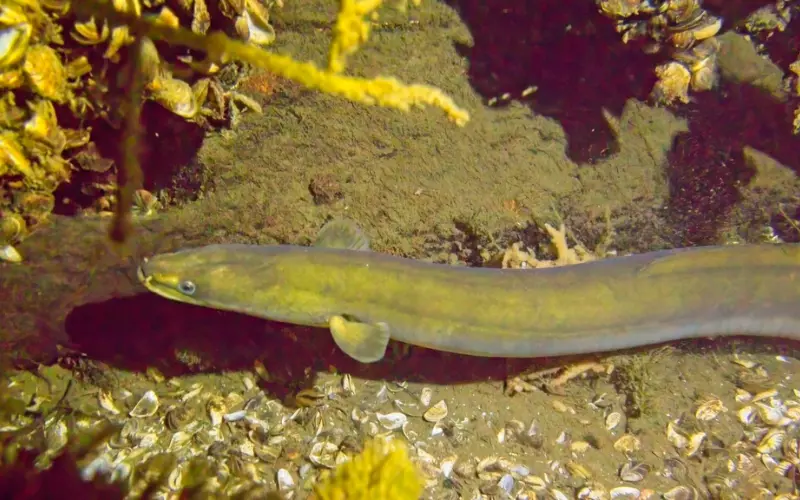
Eels, amazing creatures that live in freshwater rivers and the ocean, have a fascinating life cycle. Their life begins as tiny eggs, known as larvae, which float in ocean currents. These larvae eventually transform into transparent leptocephalus larvae, returning to freshwater rivers.
Once in the rivers, the leptocephalus larvae change again, transforming into young eels called glass eels. These young eels make their way upstream, often overcoming obstacles such as waterfalls until they reach the calm waters of rivers, lakes, or swamps. Here, they continue to grow and develop into the next stage of their life cycle.
As the eels mature, they change colour, becoming darker and slightly yellowish. At this stage, they are called yellow eels. During this time, they feed on small invertebrates like worms, insects, and fish. The yellow eels can spend several years in this stage, and their size can vary greatly, from a few inches to several feet long.
Once the yellow eels reach maturity, they undergo another transformation. They change colour again, turning silver or greyish and developing a slimmer body. Now known as silver eels, they are ready to migrate back to the ocean to breed. They swim downstream in large groups and embark on a long journey, sometimes several thousands of miles, until they reach the Sargasso Sea in the Atlantic Ocean. They release eggs and sperm to reproduce, completing the eel life cycle.
Eels start as tiny eggs that become larvae, then transform into glass and yellow eels. Finally, they become silver eels and migrate to the ocean to reproduce and finish their remarkable life cycle.
Threats to Eel
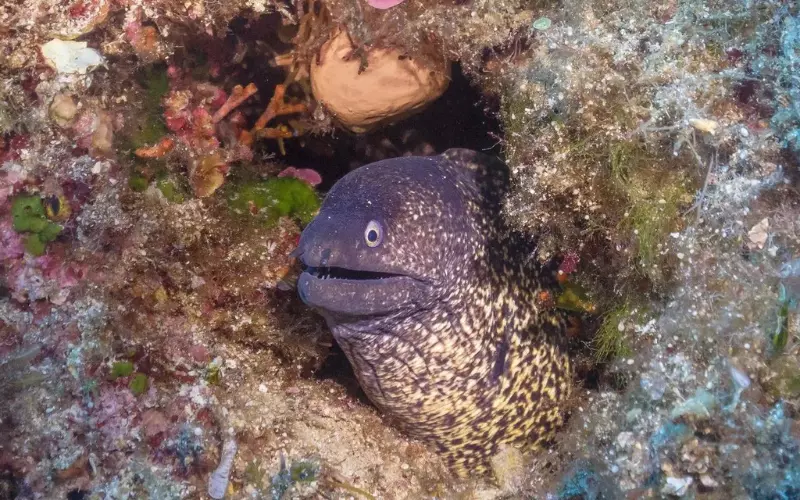
Like any other animal, eels face various threats in their natural habitats. One of the significant threats to eels is habitat destruction. As humans continue to expand their living areas and build infrastructure, they often destroy the habitats where eels live. This can happen through deforestation, pollution, or the construction of dams that block the eels’ migration routes. When eels lose their homes, it becomes difficult for them to find enough food and reproduce, which can greatly impact their population.
Another threat to eels is overfishing. Eels are valuable for their meat and are often sought after by humans for consumption. However, excessive fishing can lead to a decline in eel populations. Eels have a slow growth rate and reproduce only once during their lifetime, which makes them highly vulnerable to overfishing. Moreover, catching young eels before they can reproduce reduces the chances of maintaining a healthy eel population in the future.
Lastly, pollution poses a significant threat to eels. Pollutants such as chemicals and plastics can contaminate the water where eels live, making it difficult for them to survive. Polluted waters can harm the eels directly, causing health problems or death. Pollution can also impact the eel’s food sources, as it can kill or contaminate the smaller organisms that eels feed on. This disruption in the food chain further puts eels at risk.
Eels face several threats, including habitat destruction, overfishing, and pollution. These factors can significantly impact their survival and negatively affect their population. Humans must be aware of these threats and take measures to protect the habitats and ecosystems supporting eels and other aquatic animals.
Conclusion
To recap the fascinating world of eels, we have delved into their history, investigated some intriguing facts, explored their size and habitat, and learned about their classification. These mysterious creatures, belonging to the animal kingdom, have an ancient lineage that dates back millions of years. They have been a part of various folklore and cultures across the world.
Regarding facts about eels, we discovered that they have a slimy outer layer that helps them glide through water effortlessly. They also possess a unique sense of smell that allows them to navigate their surroundings and find food. Additionally, their size can vary greatly depending on the species, ranging from a few inches to several feet in length.
Regarding habitat, eels can be found in freshwater rivers, lakes, and marine environments. While they spend most of their lives in freshwater, they embark on long journeys to the ocean to reproduce. This astonishing migration is still a subject of scientific curiosity. Despite their widespread distribution, many species of eels face threats, emphasizing the importance of conservation efforts.
To summarise, eels are remarkable creatures that have captivated human curiosity for centuries. Their long history, fascinating traits, variable sizes, and diverse habitats make them a subject of wonder and admiration. We must continue to study and protect these extraordinary animals, ensuring their survival for generations.
Frequently Asked Questions about Eel (FAQ’s)
What type of animal is an eel?
An eel is a type of fish.
What is the average size of an eel?
The size of an eel can vary depending on the species, but on average, they range from about 4 to 40 inches in length.
Where do eels live?
Eels can be found in freshwater, saltwater, and brackish water habitats worldwide.
Are eels considered to be dangerous to humans?
Most eel species are not dangerous to humans, but some giant eels can deliver a powerful bite if provoked.
What do eels eat?
Eels are carnivorous; their diet typically consists of small fish, crustaceans, molluscs, and other invertebrates.
How long do eels live?
The lifespan of eels can vary depending on the species, but on average, they live for about 10 to 20 years.
Are eels nocturnal?
Many eel species are nocturnal, meaning they are most active at night.
Can eels breathe air?
Yes, eels have a specialized labyrinth organ, which allows them to extract oxygen from the air while out of water.
Do eels have scales?
Most eels do not have scales but have slimy and smooth skin that assists them in moving through various aquatic environments.
How do eels reproduce?
Eels have a unique life cycle: they migrate to the ocean to spawn, and their offspring return to freshwater habitats.
Can eels generate electricity?
While some eels, like the electric eel, can generate electric shocks to stun prey or for self-defence, not all eels possess this capability.
Are eels found in both freshwater and saltwater environments?
Yes, eels can be found in fresh and saltwater environments. Some eels, known as catadromous, live in freshwater but migrate to the ocean to reproduce.
Can eels be kept as pets?
Yes, eels can be kept as pets, although they require large tanks with proper filtration and plenty of hiding places due to their secretive nature.
Are all eels slimy to touch?
Yes, all eels have a layer of slime on their skin, which allows them to manoeuvre through tight spaces and reduces friction when they swim.

Hi there, I’m Emily Buono, and I’m thrilled to introduce myself! Currently, I’m part of two fantastic places: I work as a VisEx at the New England Aquarium and as an RAS at MGH CCM.
I completed my education at the Mass General Research Institute and Stonehill College, which is located in Valatie Colony, New York, in the United States.
Now, here’s the exciting part: I absolutely adore animals! They captivate me, and I’m always eager to learn more about them. In fact, I write articles all about these incredible creatures.
In the past, I’ve worn many hats, such as being a biologist at the Maria Mitchell Association, a cashier, a floor organizer, and a visitor experience and research animal specialist.
My passion lies in exploring the world of animals and helping others understand them better. So, if you ever have questions about animals, feel free to reach out. I’m here to make animal info easy and fun to grasp!












